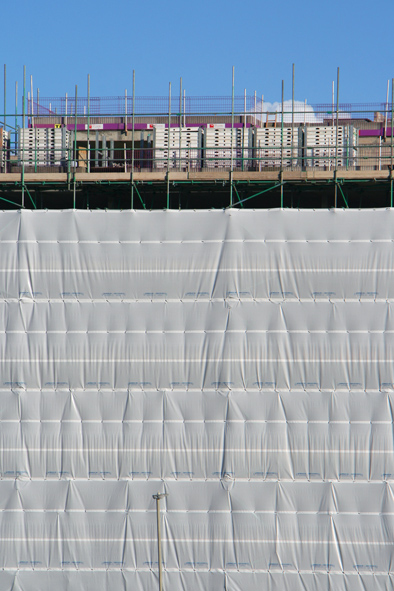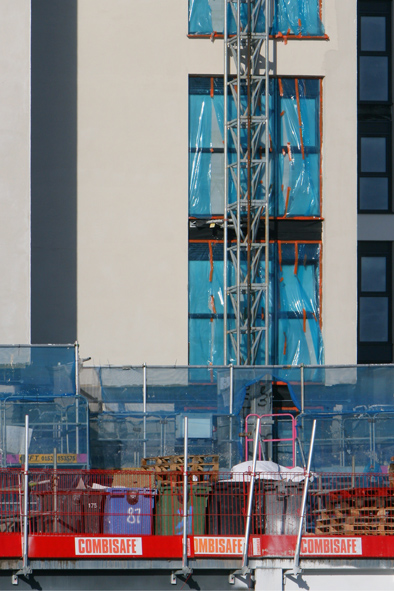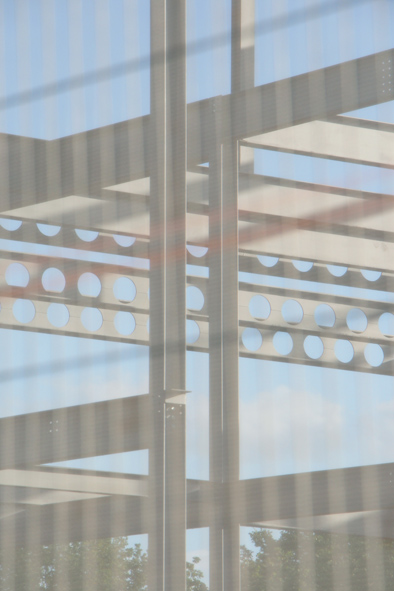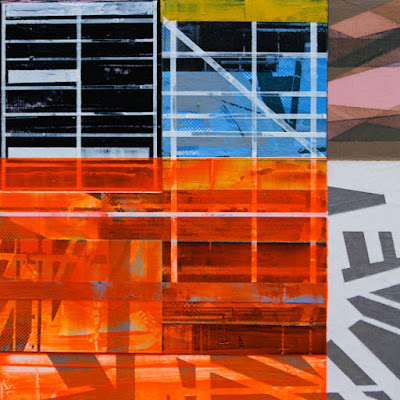 |
| All Images: South And West Leicester, 2020 |
The use of photography to inform and seed various projects, has long been part of my creative routine. That being said, the photo archive relating to my ongoing 'Constructed City' project is already the most extensive yet - no doubt, for many of the reasons detailed in my last post. If screen prints have been unavoidably on-hold for a while - and paintings are emerging at a fairly stately pace, at least I can't complain of any shortage of visual stimulus or source imagery.
Anyway, there's little point in simply sitting on them. It's unlikely many (if any) of them would ever be exhibited simply 'as-is', but they can still be informative here, I feel. I occasionally beat myself up for the relative sparsity of my final output in recent times, although that situation is actually improving somewhat, just now. If additional reassurance were needed (perhaps only to myself), trawling through all these images also proves that the overall continuum of work remains unimpeded. Less neurotically, it's definitely the case that certain visual motifs evident within them have already been translated directly into my prints, and are starting to reoccur within the paintings too.
As the sheer quantity of the material grows, they also inevitably start to self-categorise, in terms of motif, theme and formal characteristics - or even just as a catalogue of the various increasingly familiar stages typical in modern construction work. These all group themselves together behind the label of steel erection.
I love this elementary bare-bones stage of any project. Although significant preliminary work will have already taken place at (or below) ground level, this is inevitably the first significant intervention above the surface. It's also the first time one gets any real sense of the ultimate form of the building. In terms of the impact of each of these emerging edifices on the landscape, the assembly of the steels delineates a specified portion of space - a volume of urban reality, soon to be contained within curtain walls, and ultimately, to be commodified as real estate.
I've already thought a lot, and talked a bit, about the perceived annexation of terrain that all this building work represents. Clearly, this can be charted on the city's street plan, but it manifests itself vertically on a visual/pictorial plane too - as a filling-in of sections of the perceived skyline. As each of these steel armatures grows denser and more complex, I find it hard not to think of them as hatching-in designated sections of sky.
For the casual passer-by (as much as for the artist) the visual, and therefore psychological, effect, is actually far more immediate, than any consideration of square meterage on a ground plan, or attendant property value. In that sense - it is a qualitative experience. But it is perhaps at this steelwork stage that the relationship between x and y axes (and thus, perhaps - between quantitive and qualitative value) can be first properly understood. Although space remains temporarily contiguous with the wider surroundings - and thus with the accustomed environment, a new boundary has been clearly established. The complex subdivision and interrelation of spaces within it, and perhaps even their intended function, can already be perceived. In effect, a placeholder for new activity, and thus - for new meanings, has been established.
On the purely visual level, the steel skeletons provide a dramatic complex of lines, angles and negative portions of chopped-up sky, that's hard to resist. But they also seem to constitute a bridge between the idea of a building - as represented by architect's drawings and digital models, and the ultimate inhabitable edifice. They are - if you like, a tangible, explanation of an environmental transformation that is about to solidify.
And, of course - they make great silhouettes too.
















































